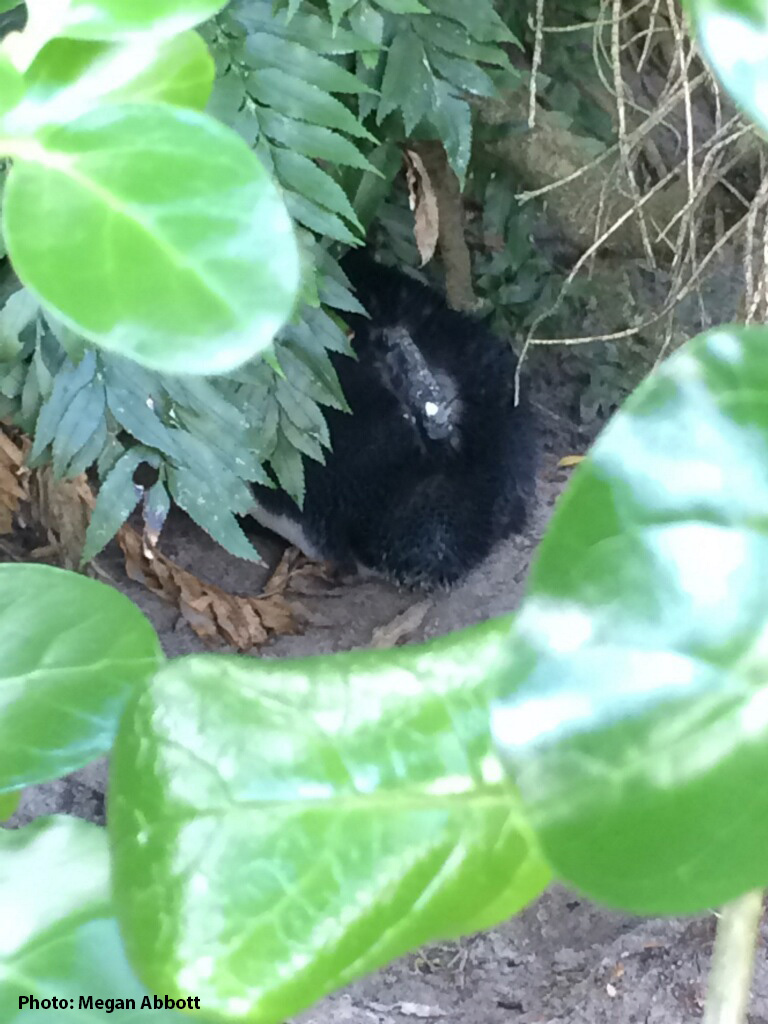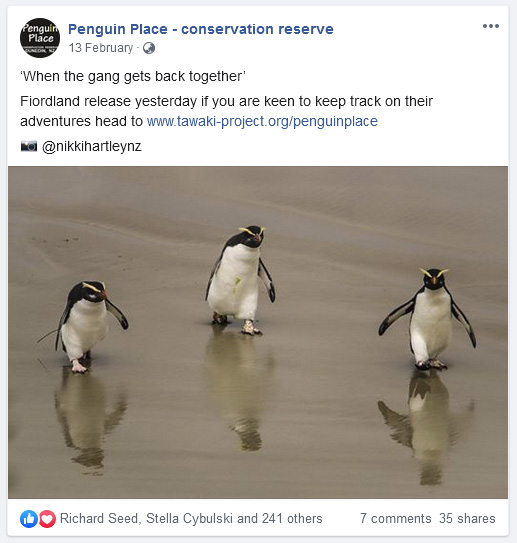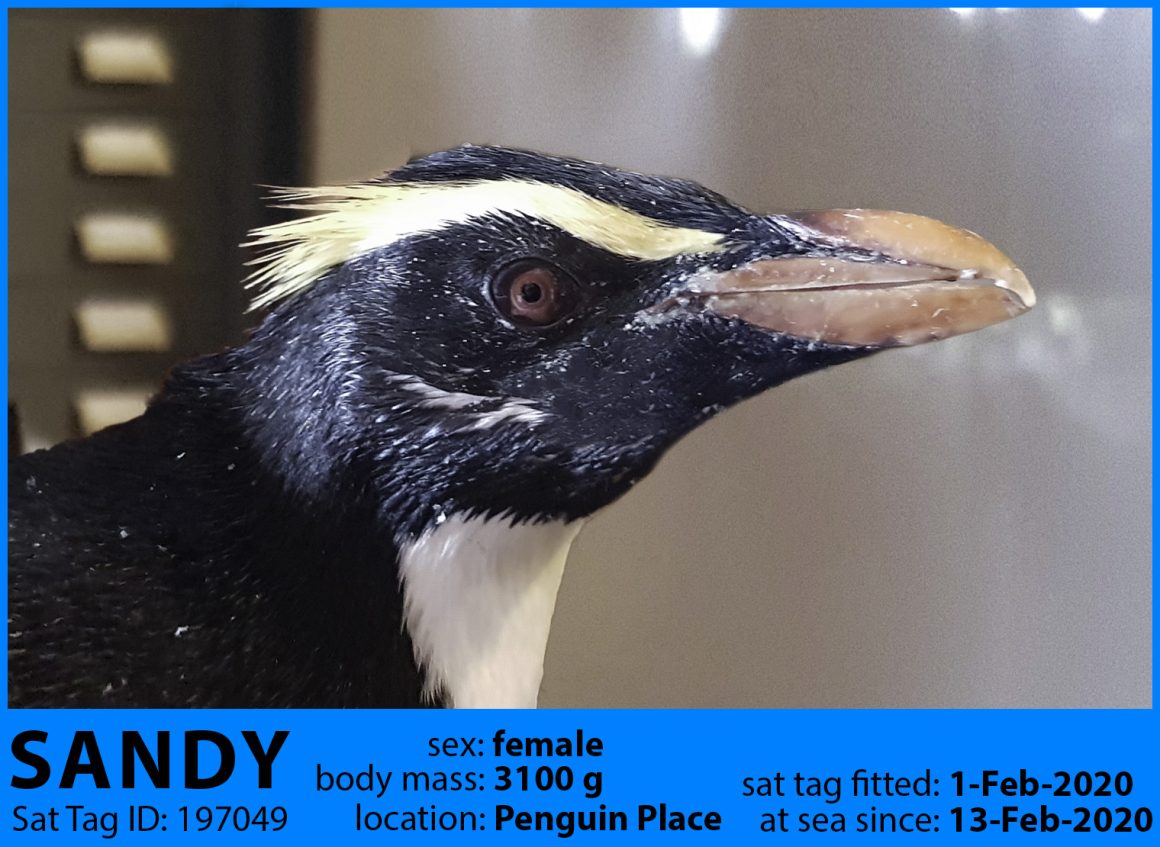Sandy

In late January, beach goers visiting Sandy Point close to Invercargill in Southland, came across a miserable looking juvenile tawaki. While moulting tawaki generally are a sad sight to behold, the fact the people take their dogs to the area meant that this certainly wasn’t a safe spot for the penguin to moult.
On 23 January, the bird was taken to Penguin Place on the Otago Peninsula where she spent the final week of her moult in the company of several other penguins, notably a couple of other tawaki (Danny & Motley, more on them in a few days), a Snares penguin as well as a bunch of juvenile Yellow-eyed penguins/hoiho.
Throughout the moult she enjoyed a daily dose of fish, so that she weighed a massive (for a female tawaki) 3.1 kg by the time she had replaced all her feathers. On 1 February, Thomas and Richard received a call from Penguin Place that Sandy was ready to receive her satellite tracker as she was about to be released later that day.
Sandy would be the first of the “rehab” group of birds. The core premise of this year’s tracking study is to compare the behaviour of penguins that received assistance through the moult (i.e. food) with that of tawaki that moulted by themselves both on the East coast and in Fiordland.
Sandy was released at Pipikaretu Beach in the afternoon the same day. But rather than run into the sea and be off, she headed straight for the bushes and disappeared in the vegetation. And there she remained for the next 7 days.

On 7 January, Sandy was still hanging around on the beach and when weighed had dropped to 2.4 kg. Penguin Place decided to take her back in to put her on a few more days of food before releasing her together with the other two tawaki still in care.

On 12 January the trio were released on the beach. And rather than three desperadoes riding off into the sunset, the three penguins headed straight back to the bushes. But this time, Sandy did not linger much longer. In the morning of 13 January 2020, Sandy hopped into the water and was on her way.

So far, Sandy hasn’t been in particular hurry. First she doodle around for a few days just off the Catlins coast before traveling South along the eastern edge of the Snares Rise. About 180 km north of the Auckland Island, she had another doodling intermission before she continues westwards. The doodling is most likely a response to good feeding conditions. In the ocean, food is seldom evenly distributed but occurs in patches, be it krill or fish swarms.
At the moment, Sandy is about 800 km west of the Auckland Islands.




